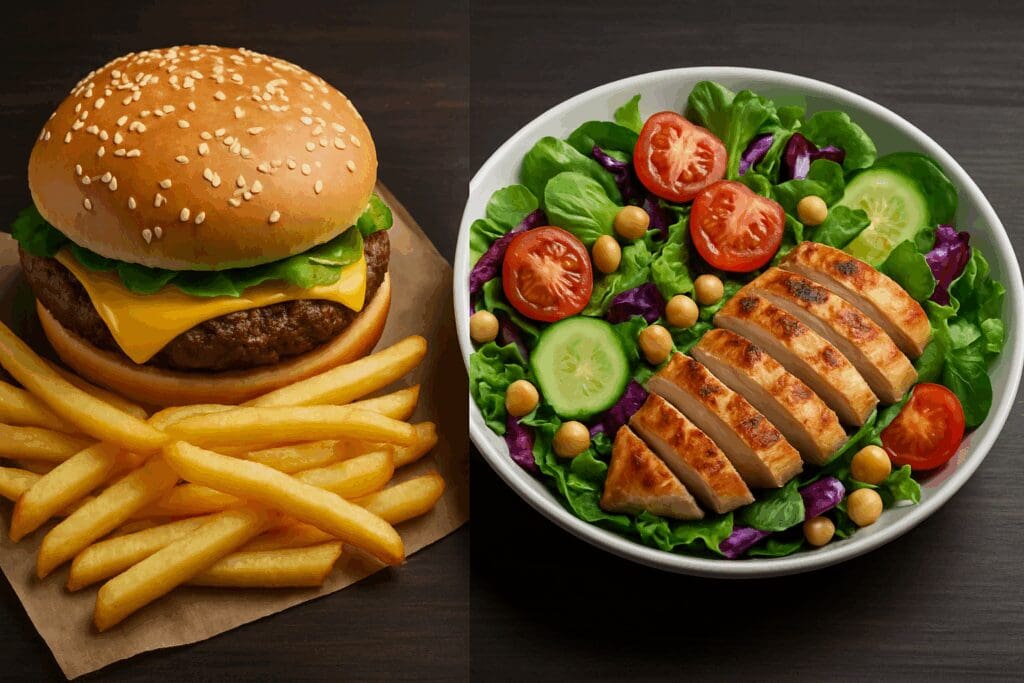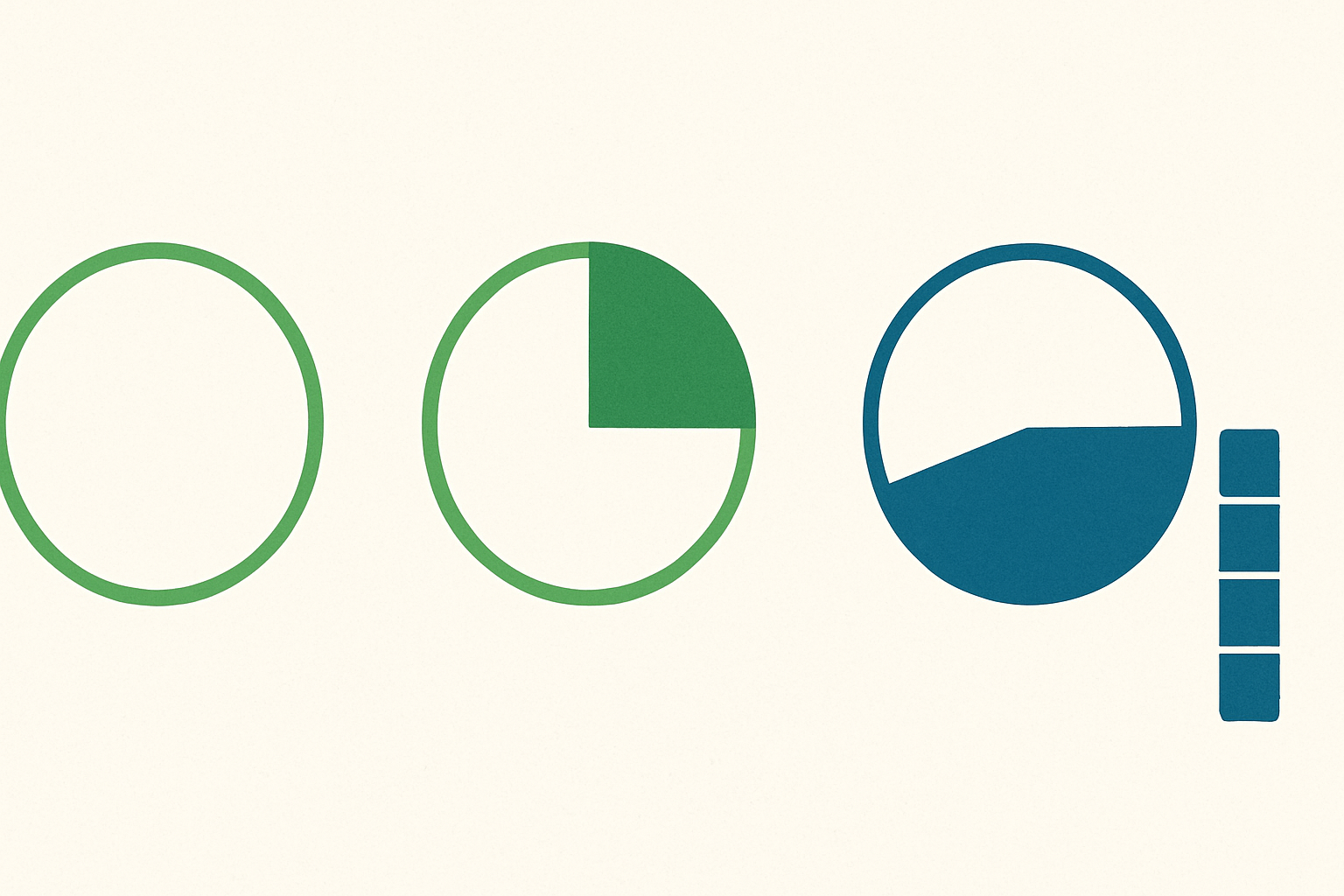In an era where dietary choices significantly impact our overall health, understanding how to read a nutrition label becomes an indispensable skill. These labels, often overlooked, are treasure troves of information that can guide us toward making informed food choices. By deciphering the data presented, we can align our eating habits with our health goals, ensuring that what we consume contributes positively to our well-being.
You may also like: 10 Essential Nutrition Rules to Follow for a Healthy Diet for Women in 20s

The Anatomy of a Nutrition Label: Decoding the Basics
At first glance, a nutrition label may seem like a complex grid of numbers and percentages. However, each component serves a specific purpose in conveying the nutritional value of the food item. The label typically starts with the serving size, which is crucial for interpreting all subsequent information. It’s essential to note that all nutritional data provided pertains to this specified serving size, not the entire package.
Following the serving size, the label lists the total calories per serving. This figure indicates the amount of energy you would obtain from consuming one serving of the product. Understanding calorie content is vital for managing energy intake, especially for those monitoring weight or energy balance.
The label then breaks down macronutrients—fats, carbohydrates, and proteins—detailing their respective quantities. Each macronutrient plays a unique role in bodily functions, and their balance is key to a healthy diet. Additionally, the label includes information on micronutrients such as vitamins and minerals, which are essential for various physiological processes.
Serving Size and Servings Per Container: The Foundation of Accurate Interpretation
The serving size listed on a nutrition label is not a recommendation of how much one should eat but rather a standardized amount that reflects typical consumption patterns. It’s important to compare this serving size to the amount you actually consume to accurately assess your intake of calories and nutrients.
For instance, if a serving size is one cup and you consume two cups, you would need to double all the nutritional values listed. This understanding is crucial for maintaining accurate dietary records and making informed decisions about portion sizes.

Calories: Understanding Energy Intake
Calories represent the amount of energy provided by a serving of food. Monitoring caloric intake is essential for weight management and overall health. However, it’s not just about the number of calories but also the source. Calories derived from nutrient-dense foods contribute to better health outcomes compared to those from foods high in added sugars and unhealthy fats.
It’s also important to consider the concept of “empty calories,” which are calories from foods that offer little to no nutritional value. Being mindful of these can help in making choices that support overall health and wellness.

Total Fat, Saturated Fat, and Trans Fat: Navigating the Types of Fats
Fats are an essential part of the diet, providing energy and supporting cell function. However, not all fats are created equal. Total fat includes all types of fats present in the food, but it’s crucial to distinguish between saturated and trans fats, which can have adverse health effects.
Saturated fats, found in animal products and certain oils, can raise LDL cholesterol levels, increasing the risk of heart disease. Trans fats, often present in processed foods, are particularly harmful and have been linked to various health issues. It’s advisable to limit the intake of these fats and instead focus on unsaturated fats found in nuts, seeds, and fish, which offer health benefits.
Cholesterol and Sodium: Monitoring Heart Health
Cholesterol and sodium are two components that, when consumed in excess, can negatively impact heart health. Dietary cholesterol, found in animal products, can influence blood cholesterol levels, although recent research suggests the effect may be less significant than previously thought.
Sodium, commonly found in processed and packaged foods, can contribute to high blood pressure and cardiovascular disease when consumed in large amounts. Reading nutrition labels to monitor sodium intake is a proactive step toward maintaining heart health.

Total Carbohydrates, Dietary Fiber, and Sugars: Balancing Energy and Digestive Health
Carbohydrates are the body’s primary energy source, but the type of carbohydrate consumed matters. Total carbohydrates encompass all carbohydrate types, including sugars and dietary fiber.
Dietary fiber, found in whole grains, fruits, and vegetables, supports digestive health and can aid in weight management. Sugars, particularly added sugars, should be consumed in moderation. Nutrition labels now distinguish between natural and added sugars, allowing consumers to make more informed choices.
Protein: Building and Repairing the Body
Protein is vital for building and repairing tissues, making it a crucial component of the diet. The amount of protein required varies based on factors such as age, sex, and activity level. Nutrition labels provide the protein content per serving, aiding in meeting individual dietary needs.
It’s also beneficial to consider the source of protein, opting for lean meats, dairy, legumes, and plant-based proteins, which offer additional nutrients and health benefits.
Vitamins and Minerals: Ensuring Micronutrient Sufficiency
Micronutrients, including vitamins and minerals, are essential for numerous bodily functions. Nutrition labels list key micronutrients such as vitamin D, calcium, iron, and potassium, along with their percentage of the Daily Value (%DV).
The %DV helps consumers understand how a serving of food contributes to their daily nutrient requirements. A %DV of 5% or less indicates a low source, while 20% or more signifies a high source of the nutrient. This information assists in selecting foods that help meet daily micronutrient needs.

Percent Daily Value (%DV): Interpreting Nutrient Contributions
The %DV on nutrition labels provides a context for how much a nutrient in a serving of food contributes to a daily diet, based on a 2,000-calorie reference. This tool helps consumers assess the nutrient density of foods and make comparisons between products.
Understanding %DV is particularly useful for managing nutrient intake, ensuring that one does not exceed recommended limits for nutrients like saturated fat and sodium, while also striving to meet the recommended intake for beneficial nutrients like fiber and calcium.

Ingredients List: Identifying Food Components
Beyond the nutrition facts, the ingredients list offers insight into what is actually in the food. Ingredients are listed in descending order by weight, allowing consumers to identify the primary components of the product.
This list is crucial for individuals with food allergies, sensitivities, or dietary restrictions, as it helps in identifying potential allergens or unwanted additives. It’s also a tool for assessing the overall quality of the food, with shorter lists of recognizable ingredients often indicating less processed products.
Marketing Claims and Front-of-Package Labels: Navigating the Hype
Food packaging often includes marketing claims such as “low-fat,” “natural,” or “whole grain,” which can be misleading. It’s important to look beyond these claims and refer to the nutrition label and ingredients list for accurate information.
Front-of-package labels may highlight certain nutrients or health benefits, but they do not provide a complete nutritional profile. Relying solely on these claims can lead to misconceptions about the healthfulness of a product.
Making Informed Choices: Applying Nutrition Label Knowledge
Armed with the knowledge of how to read and interpret nutrition labels, consumers can make choices that align with their health goals. This includes selecting foods that are nutrient-dense, monitoring intake of less desirable nutrients, and being cautious of misleading marketing claims.
Incorporating this practice into daily life can lead to improved dietary habits, better health outcomes, and a greater sense of control over one’s nutritional well-being.
Frequently Asked Questions About Understanding and Using a Nutrition Label Effectively
1. Why is interpreting a nutrition label essential for people with hidden food intolerances or sensitivities?
For individuals with food sensitivities, reading a nutrition label can be the difference between a healthy choice and an unpleasant reaction. Labels often reveal trace amounts of ingredients not immediately obvious—like dairy derivatives listed as casein or whey, or gluten found in malt extract. Although nutrition data primarily highlights macronutrients, closely examining ingredient lists and allergen statements can uncover hidden culprits. Informed consumers learn to spot red flags like ambiguous “natural flavors” or “modified food starch,” which can be derived from common allergens. Mastering this level of label analysis ensures greater confidence and safety, especially when dining without professional dietary oversight.
2. How can understanding and nutrition facts help athletes customize their intake before training?
Athletes often require fine-tuned control over their intake of carbohydrates, protein, and electrolytes, which is why being fluent in nutrition label interpretation is invaluable. For example, the difference between simple and complex carbohydrates isn’t always directly labeled, but total sugars and fiber content can offer clues. Athletes may use nutrition data to balance glycogen replenishment with protein synthesis post-workout, while also monitoring sodium to avoid cramping. Beyond macros, certain micronutrients—like potassium and magnesium—play a role in muscle function but are frequently overlooked. Reading and interpreting these labels empowers performance-driven nutrition with precision.
3. How do marketing claims on packaging mislead consumers despite the presence of a nutrition label?
Terms like “light,” “natural,” or “low-fat” are not always indicators of healthy choices, even when printed next to a detailed nutrition label. A food labeled “light” may be lower in fat but higher in sugar, which alters the overall nutritional value. Similarly, “natural” doesn’t mean free of additives or preservatives. These claims are regulated loosely and often capitalize on perception rather than reality. The best defense is comparing the actual nutrition facts to the front-of-pack slogans. Consumers who understand how to read and contextualize these facts are better equipped to avoid falling for misleading marketing tactics.
4. What can analyzing a nutrition label reveal about the product’s processing level?
Highly processed foods often hide behind modest calorie counts, but a detailed nutrition label can expose them. A long list of additives, stabilizers, or unfamiliar ingredients usually indicates heavy industrial processing. Likewise, disproportionate sodium-to-calorie ratios or added sugars in non-dessert items suggest excessive processing. Nutritional value diminishes when artificial components outweigh whole food ingredients. Becoming adept at reading labels helps consumers choose minimally processed items, even when they’re packaged similarly to ultra-processed counterparts.
5. How can the design and formatting of a nutrition label influence comprehension and food choices?
The layout of a nutrition label—font size, placement of servings per container, and color contrast—can significantly affect how well consumers understand what they’re eating. For example, if the serving size is de-emphasized or placed far from the calorie count, individuals may underestimate their actual intake. In foods marketed to children or seniors, simplified formats or visual cues (like traffic light symbols) can enhance label readability. Researchers have shown that poorly designed labels lead to misunderstanding of nutrition data, resulting in unintended overconsumption or avoidance of otherwise nutritious foods. Designing for clarity is not just aesthetic—it’s a public health tool.
6. Why is the “per serving” measurement on a nutrition label a critical detail often overlooked?
Many consumers misinterpret the values on a nutrition label as applying to the entire package, not realizing they’re for a single serving. This misunderstanding can lead to massive underestimation of calorie, sugar, or sodium intake. A small snack bag may contain 2.5 servings, meaning a single session of mindless eating could triple the anticipated nutritional value. Nutrition facts should always be recalculated based on actual portions consumed. Educating consumers to multiply nutrition data by serving multiples is key to preventing inaccurate dietary tracking.
7. What role does the nutrition label play in managing chronic conditions like hypertension or diabetes?
For individuals managing chronic health conditions, the nutrition label serves as a frontline tool for daily self-care. Those with hypertension benefit from tracking sodium content—often hiding in sauces and processed meats—even in foods not perceived as salty. Diabetics need to interpret total carbohydrate content, with attention to sugars and dietary fiber, to maintain glycemic control. The label’s precision enables personalized health decisions that medication alone cannot accomplish. Long-term health outcomes often correlate with how consistently and accurately patients use nutrition data in everyday choices.
8. How does tracking nutrition facts over time help support behavioral change and weight management?
Using a nutrition label isn’t just about single meals—it can support broader behavior shifts when tracked consistently. By keeping a food diary that includes label-derived nutrition data, individuals can identify recurring dietary patterns such as excessive sugar intake or protein deficiency. These insights encourage mindful adjustments like substituting snacks, adjusting portion sizes, or meal prepping. Moreover, psychological reinforcement from watching trends shift can boost motivation. Over time, this detailed logging evolves from a task into a transformative habit for sustainable health.
9. What innovations are emerging to make nutrition label data more interactive and consumer-friendly?
New technologies are transforming static nutrition labels into dynamic tools. Smartphone apps can now scan barcodes to provide real-time analysis of nutritional value, environmental impact, and even tailored suggestions based on dietary goals. Augmented reality overlays and smart packaging may soon deliver spoken interpretations for visually impaired consumers. In the near future, AI could evaluate nutrition facts in relation to a user’s medical history and suggest personalized adjustments. These innovations democratize access to complex data and are redefining how we interact with food labels beyond the grocery aisle.
10. How can the nutrition label be used to support ethical and sustainable eating practices?
Though often viewed through a health lens, the nutrition label can also support ethical choices. By analyzing total calories relative to environmental footprint—such as plant-based foods offering higher nutritional value per resource unit—consumers can align eating with sustainability goals. Labels on ethically sourced foods may include additional data points, like carbon impact or fair-trade certifications. Understanding how to balance nutrition data with ecological context empowers more holistic food decisions. Over time, this multidimensional approach can influence market demand for products that support both personal and planetary health.
Conclusion: Empowering Health Through Nutrition Label Literacy
Understanding how to read a nutrition label is a powerful tool in the pursuit of a healthier lifestyle. It enables individuals to make informed decisions, tailor their diets to meet specific health needs, and navigate the complex food landscape with confidence. By taking the time to interpret these labels, we invest in our health, ensuring that our dietary choices support our overall well-being.



